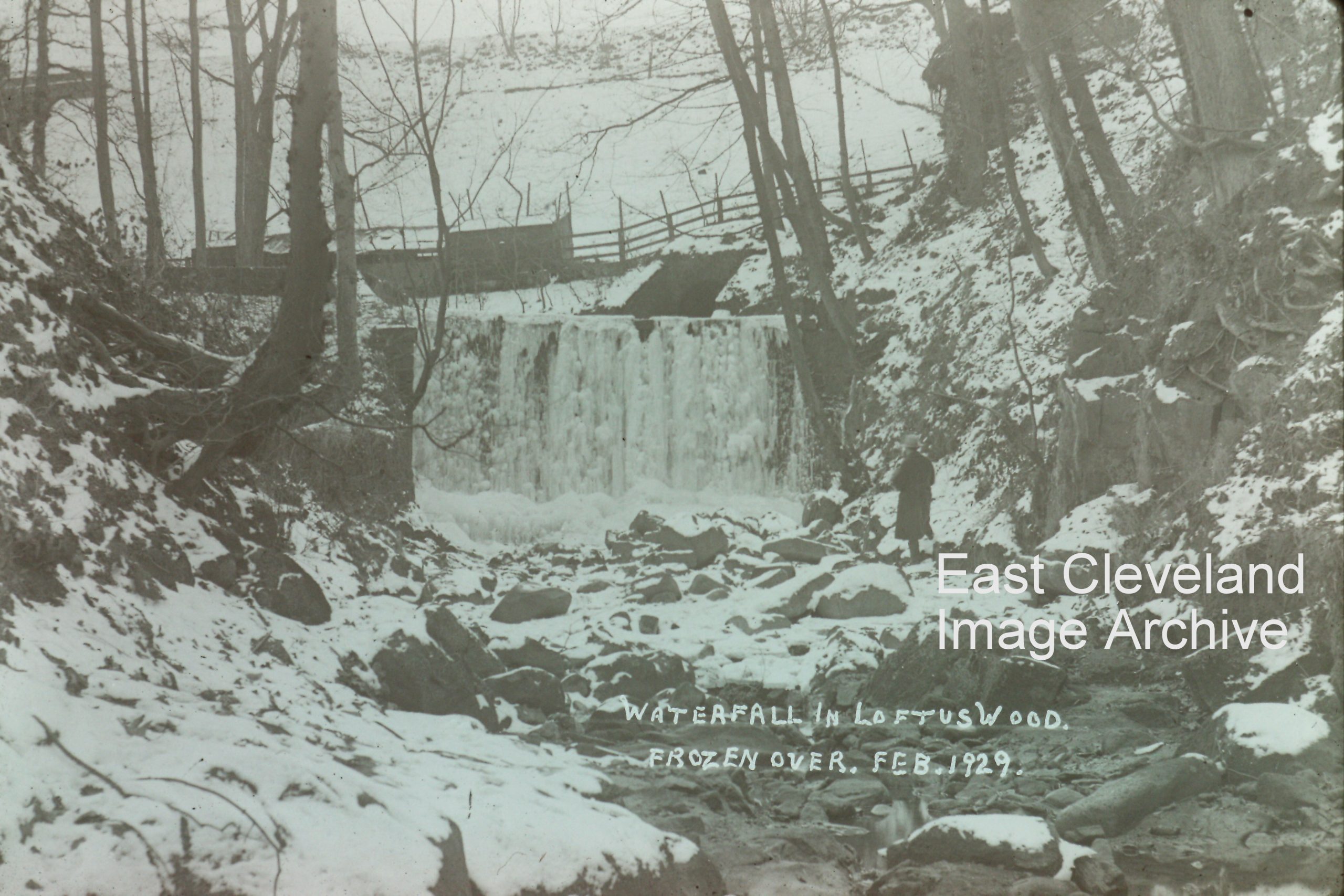
Obviously it was a cold winter in 1929! This postcard view give a dramatic view of the intensity of the cold weather, the waterfall appears as a solid wall of ice. Brrrr.
Image courtesy of a supporter of the Archive.
|
|
||
 Obviously it was a cold winter in 1929! This postcard view give a dramatic view of the intensity of the cold weather, the waterfall appears as a solid wall of ice. Brrrr. Image courtesy of a supporter of the Archive. 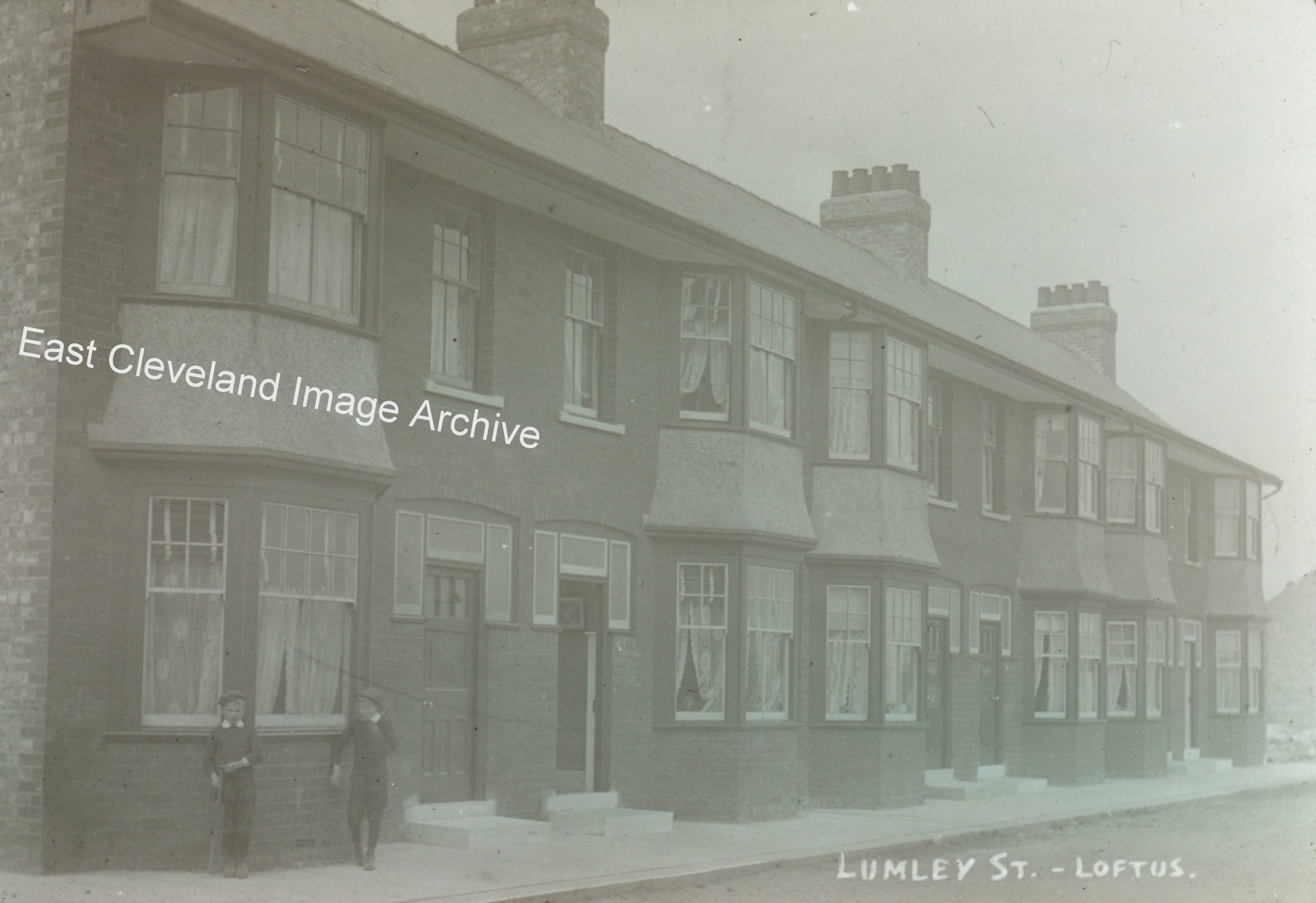 Another early view of Loftus; the are of Loftus known to many of the older generation as ‘The Brickyard’; being close to the original brick production yard near the Mars Inn (originally Mars Farmhouse). The style of dress of the young lads lounging against the window of number 1, give and idea of the date. Image courtesy of a supporter of the Archive. 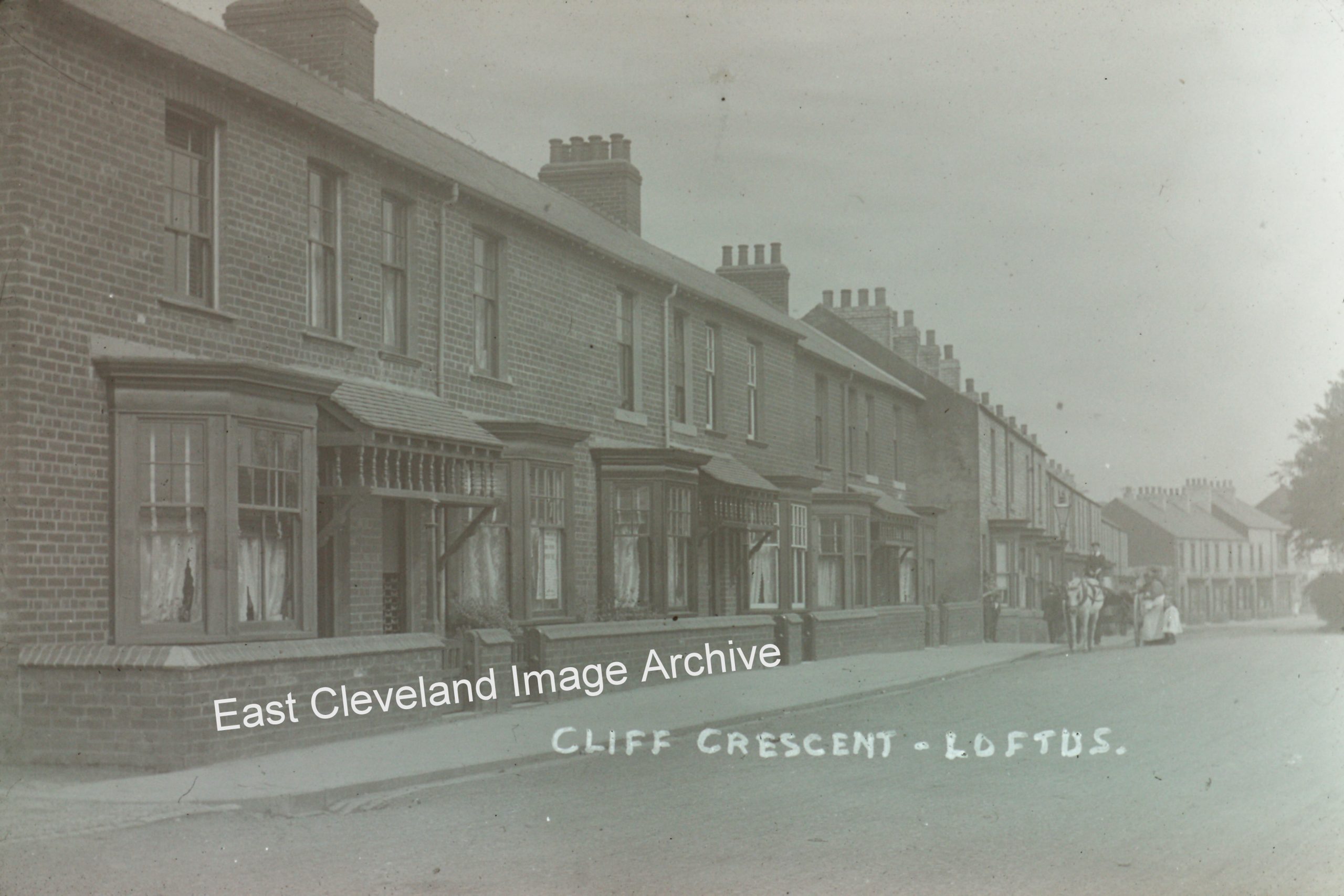 An early view of Cliff Crescent, Loftus; this view of the Crescent will be familiar to all who travel through Loftus after ascending Loftus bank. The pony and trap on the incorrect side of the road gives an idea of how light the traffic flow would be at the time this postcard view was taken.is a good start. Such an activity today, discounting the vehicles kerbside parked would be a recipe for disaster. Image courtesy of a supporter of the Archive. 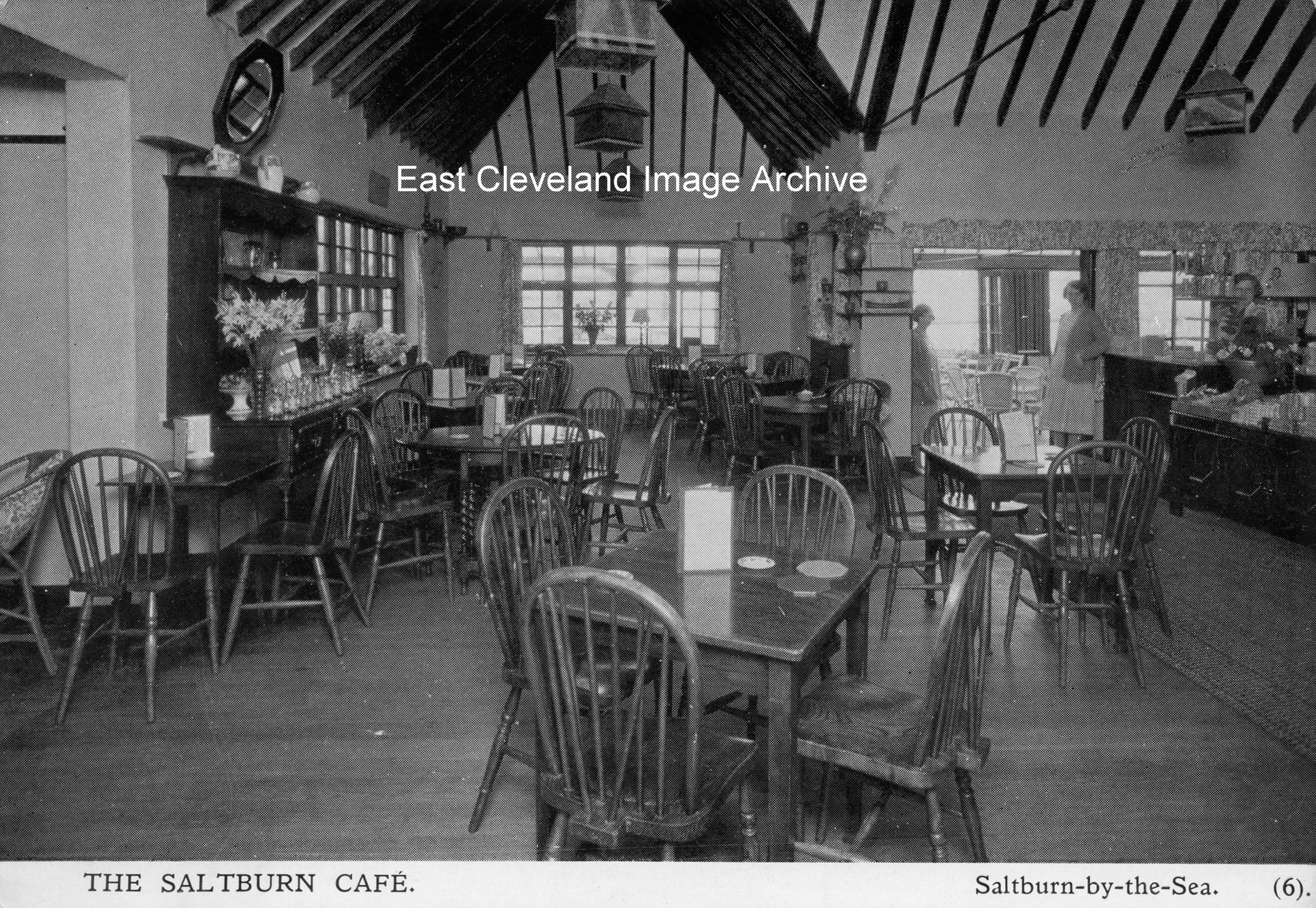 This final image finally has some staff(?) in view, that is the assumption; with a person behind the cafe counter. Although the two ladies in the door way can also be seen in the first interior view; standing in the double doors looking out over the front steps from the corner of Spa Bank and the lower promenade. Do you know whom they are? Image and information courtesy of Reg Wilson, additional information courtesy of Ancestry, Find My Past and Callum Brown. 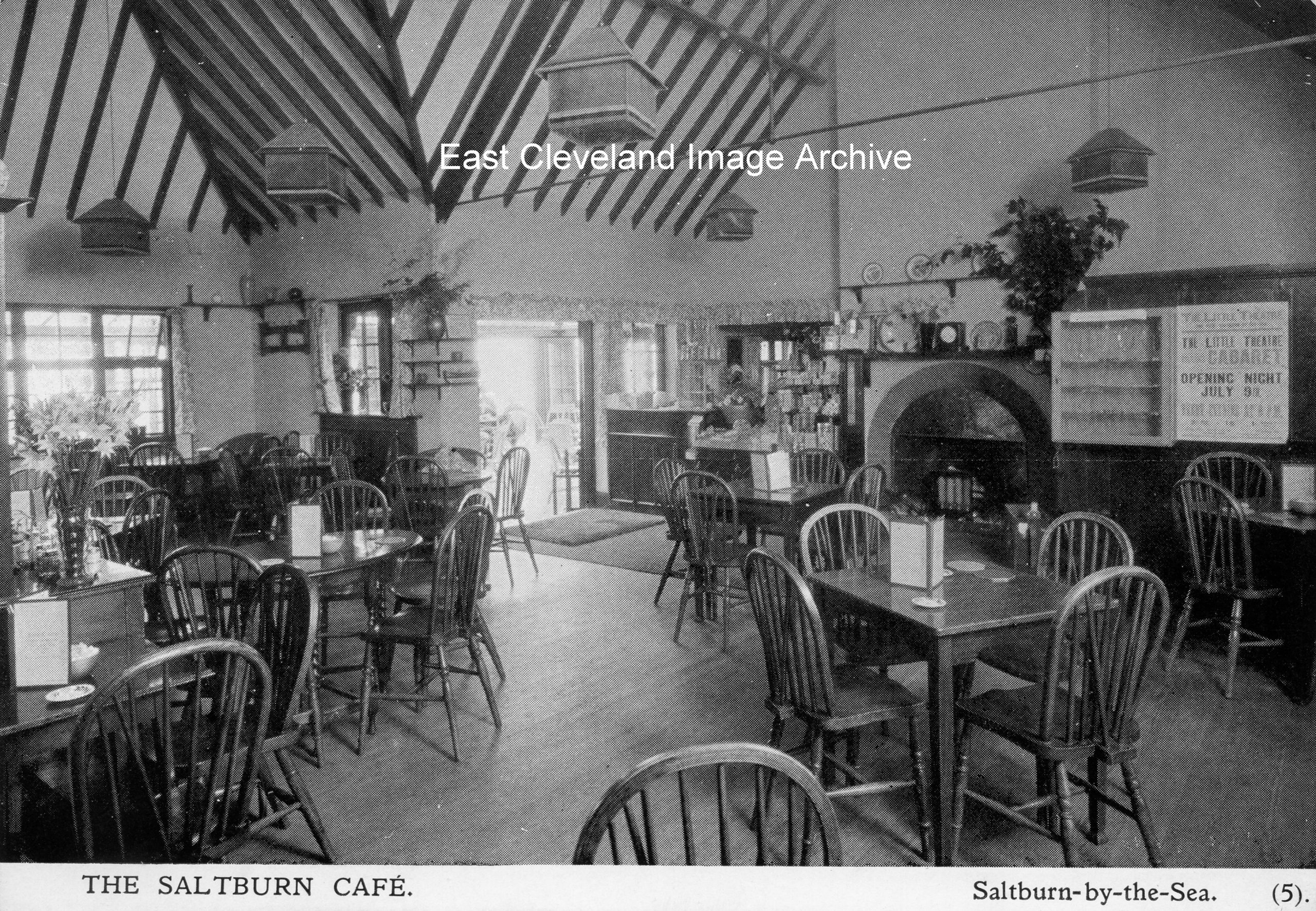 This fourth interior view (which if in the correct sequence should go between images 2 and 3), has a noticeboard which includes a poster for “The Little Theatre – Cabaret” with the opening night on July 9th. Year unknown, as yet; perhaps one of our watchers can assist? As with other pictures in this sequence, very few customers can be seen. Image and information courtesy of Reg Wilson, additional information courtesy of Ancestry, Find My Past and Callum Brown. 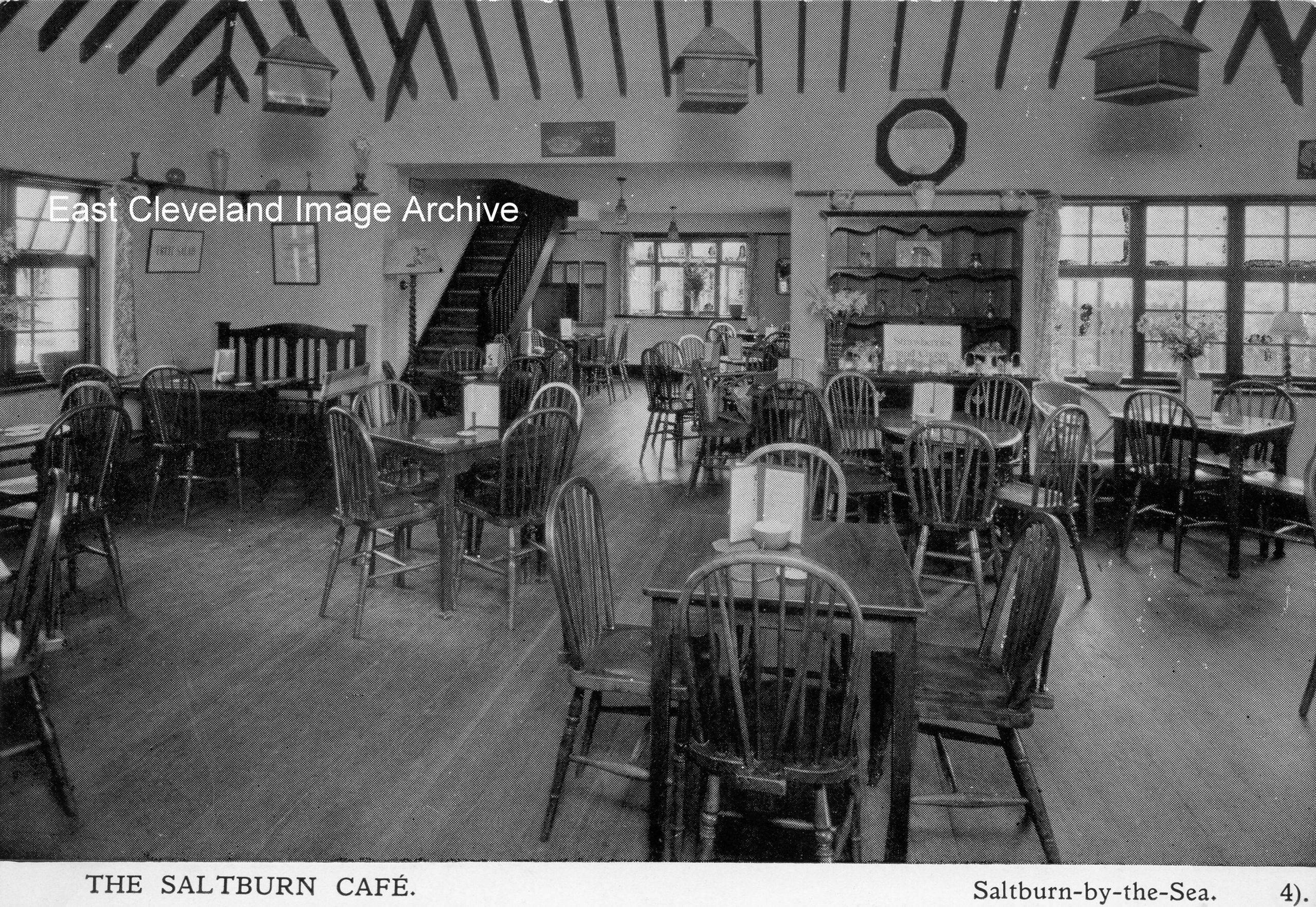 This third interior view, obviously pans further round the cafe, showing the staircase to the upper floor. The use of windsor style of chairs give an idea of the quantity of customers the cafe could cater for at any one time. I have memories of the cafe in the 1950s, when with my mother of tea and other refreshments could be purchased from the cafe and taken to the beach. The crockery was a more basic white crockery; but complete with tea pot and was always returned to the cafe after use. No throw-away paper or plastic in those days; and obviously breakages must have had to be paid for! Does any of our watchers rmember these times. Image and information courtesy of Reg Wilson, additional information courtesy of Ancestry, Find My Past and Callum Brown. 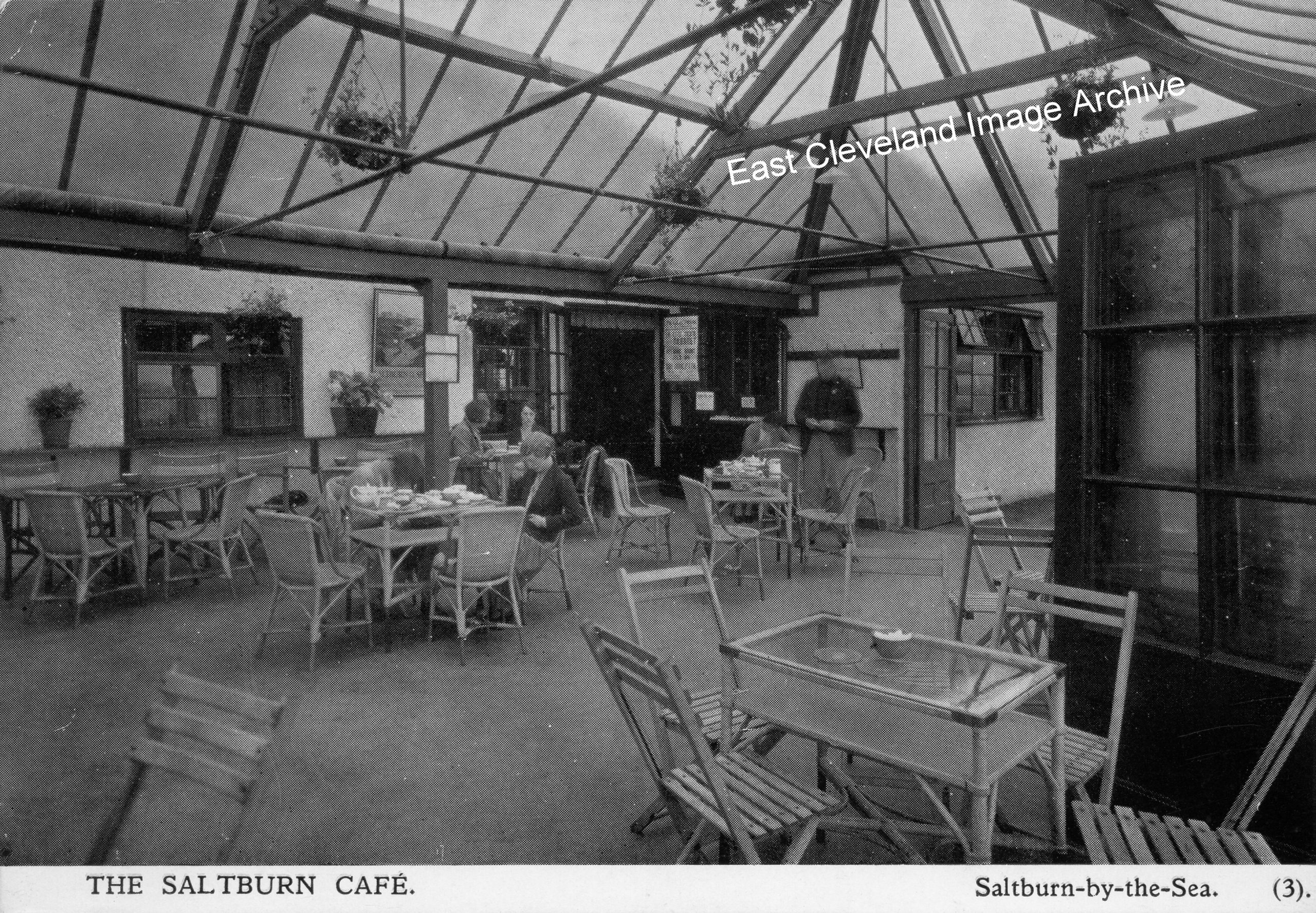 This view, number three in the series, is almost a reverse of the previous image; looking toward the side entance from Spa Bank. Obviously the wooden slatted chairs would be more easily stored when only the inside seating could be utilised in the event of inclement weather. Researches have revealed that by the 1939 Census Betty had married Alan Swift and moved to live in Middlesex. Reg Wilson was told by his mother: “Alan Ward was a notable cricketer”. The Archive is still researching this detail, Alan Swift in the 1939 Censu is recorded as an Assistant Solicitor;but would welcome any additional inforamtion our viewers can add. Image and information courtesy of Reg Wilson, additional information courtesy of Ancestry, Find My Past and Callum Brown. 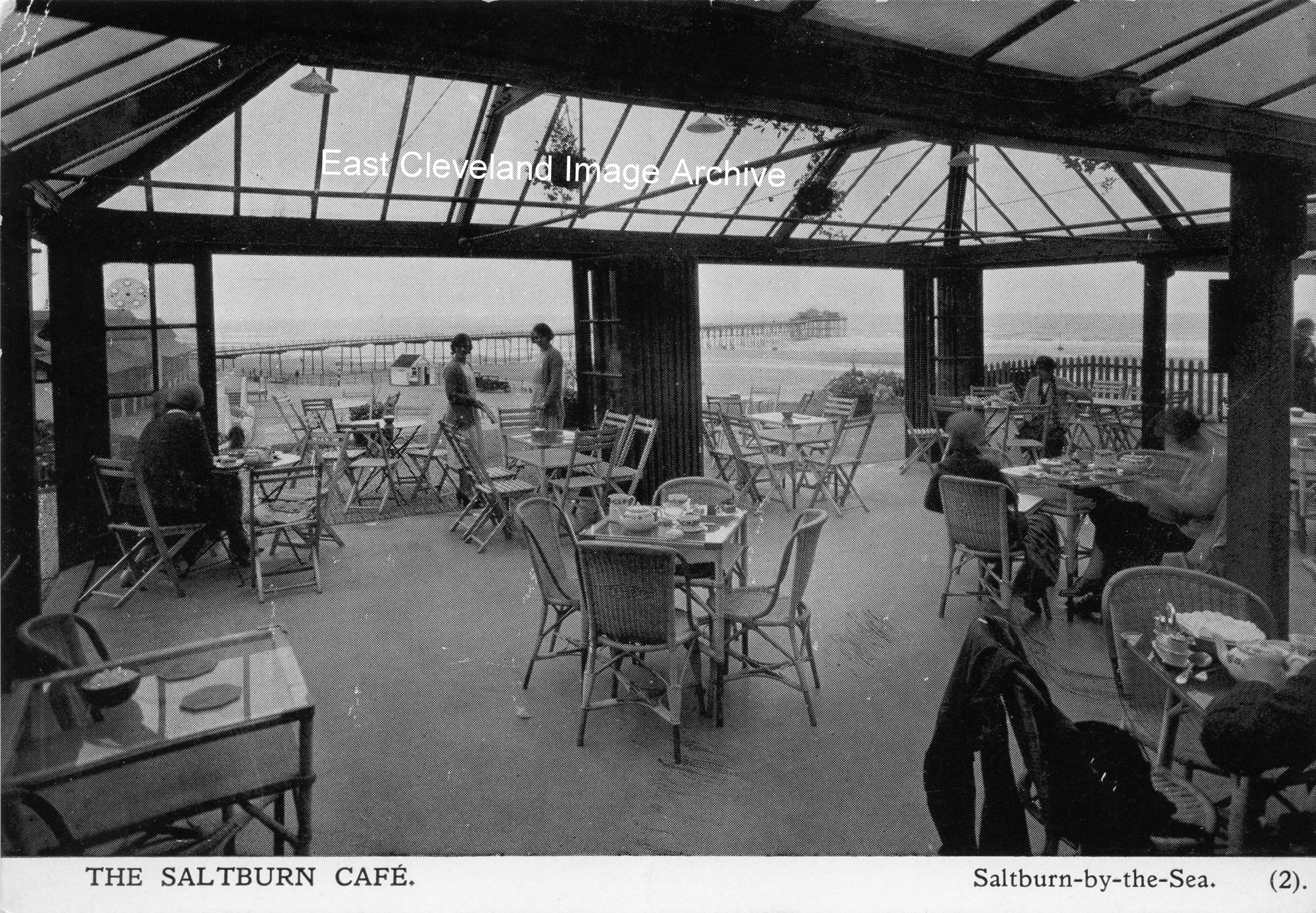 The second postcard view of The Saltburn Cafe, is the first of a series of five interior views of the cafe; looking out towards the pier (complete with the then familiar shelter on the end. Reg Wilson advised “My mother could remember that the manageress at that time was a Betty Osborne.” By the time of the 1939 Census (taken at the outbreak of WWII) the occupants of the cafe (which included accommodation in the upper storey) was a Miriam Osborne (55 year old widowed mother of Betty) and others. The glass topped tables and ratan chairs are very typical of that period, as well as the patterned crockery on the tables; giving an idea of the high status the cafe may had at that time. Image and information courtesy of Reg Wilson, additional information courtesy of Ancestry, Find My Past and Callum Brown. 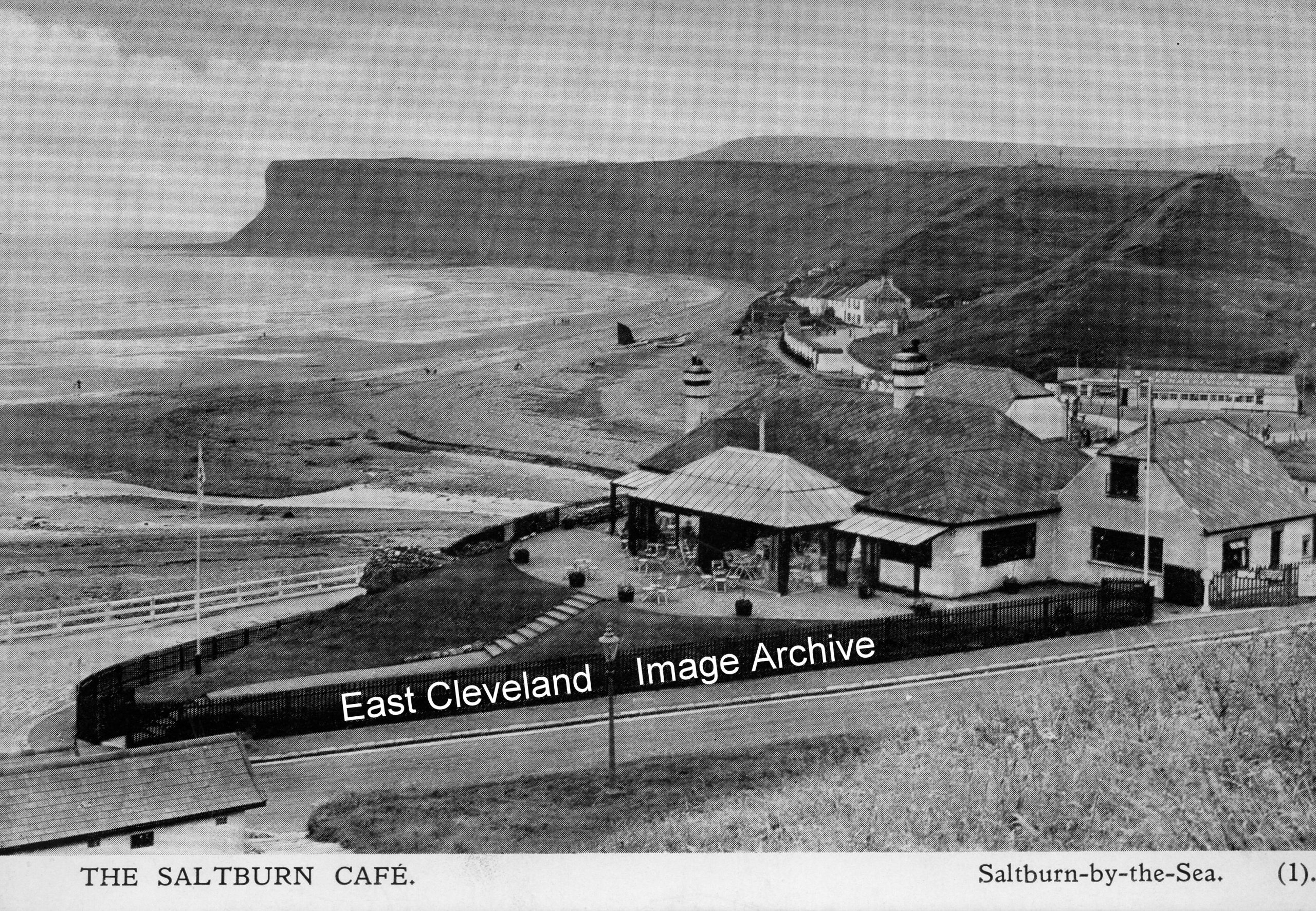 Today it is known as ‘Vista Mar’, but in the 1930s it was known as The Saltburn Cafe, featured in this series of postcard views; starting with an exterior view from Spa Bank towards Huntcliffe. Reg Wilson tells the Archive: “My mother worked at the cafe in the 1930s and had many happy memories of her time there.” Image and information courtesy of Reg Wilson, additional information courtesy of Ancestry, Find My Past and Callum Brown. 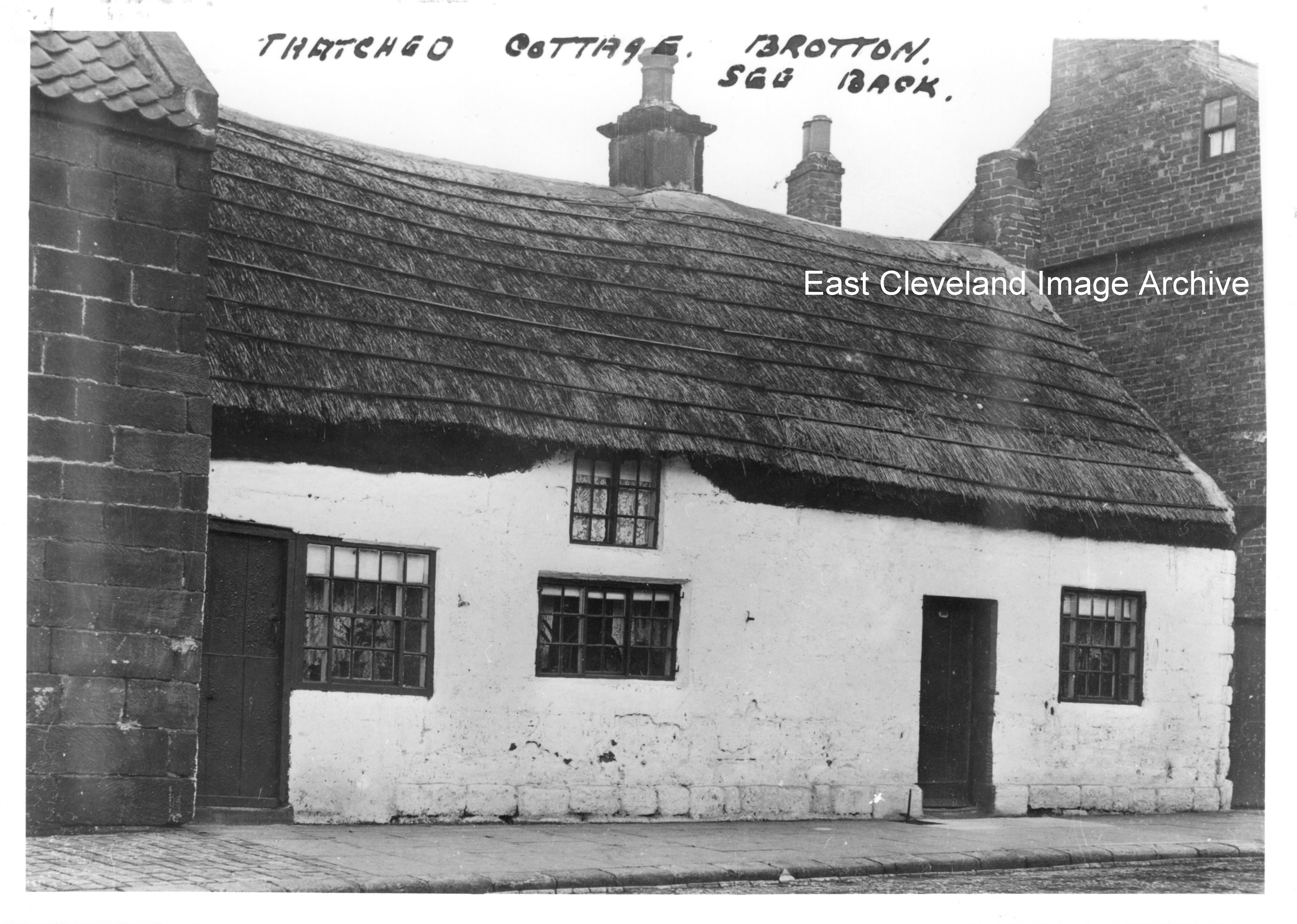 A further thatched cottage, believed to be close to the Ship Inn (on the rear part of Brotton High Street) and behind the present day Spar convenience store. It is believed that the thatched cottage is no more; having been replaced by a two storey Victorian brick building. The image when it came to the Archive did not have the details as listed on the image (‘SEE BACK’), so any additional information about the building or dating would be very welcome. Julie Riddiough has advised the Archive: ” The building to the right on the picture was The Shoemakers Arms”. Bill Danby (whilst conducting other researches) has advised the Archive of an entry for Skelton and Brotton District Council that on 6th July 1934 – demolition of 129 High Street, Brotton; Thatched Cottage. Image courtesy of The David Linton Collection and thanks to Julie Riddiough for that update, also to Bill Danby for the actual demolition date of the building. |
||
Recent Comments